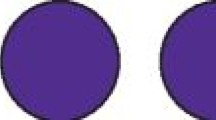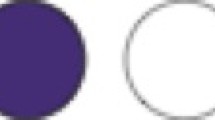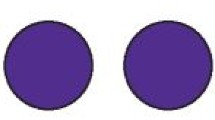Abstract
Design Non-randomised cohort study.
Cohort selection The inclusion criteria comprised patients who finished their comprehensive orthodontic treatment based on a camouflage non-extraction modality using self-ligating orthodontic appliances therapy (SPEED brackets, Canada or Empower brackets, American Ortho, Sheboygan, WI, USA) or clear aligner therapy (Invisalign, Align Technology, San Jose, CA, USA). Patients were recruited from a university orthodontic clinic and a senior orthodontist's practice. The exclusion criteria comprised patients presenting with hypodontia, microdontia, severe periodontal problems, heavily resorted teeth and patients who were using retainers with occlusal coverage.
Data analysis Included patients were assessed at three points in time: at the end of active orthodontic treatment and the start of retention phase (T0); at three months post treatment (T3); and at six months post treatment (T6). The following three assessments were done for each patient at T0, T3 and T6: a T-Scan 10 digital occlusal analysis recording into maximum intercuspation position (MIP); self-report about retainer compliance; and self-assessment of occlusal comfort using a visual analogue scale (VAS) ranging from 0-10 (0 = very uncomfortable; 10 = maximum comfort).
The digital occlusal analysis was performed using a 100μ thin, flexible, horseshoe-shaped Mylar sensor (Novus HD sensor, Tekscan Inc, S. Boston, MA, USA). This sensor contains 1,370 active pressure sensing cells, known as sensels, arranged in a compact grid, shaped as a dental arch. The patients were given instructions on how to bite on the sensor. With the sensor still in the patient's mouth, three consecutive self-intercuspated closure-into-MIP registrations were recorded. If there was a need to repeat the procedure, one minute was given as a rest. If several recordings were done for the same patient in the same visit, the most consistency between the three consecutive intercuspations was used for analysis. In addition, the same sensor was used in T0, T3 and T6, unless the sensor shown excessive wear.
The following outcomes were assessed using the digital occlusal analysis: 1) an estimate of occlusal contact surface area based on the activated sensels on the sensor at MIP; 2) the total surface of contacts and the area ratio between anterior (canine to canine) to posterior (premolar to second molar) contact surfaces; 3) the overall relative force distribution based on the by the position of the centre of force (COF); 4) the symmetry of contact distribution was expressed as the percentage of contacts on the right side to the left side (%R/L); and 5) the time-simultaneity of the closure into MIP contacts was calculated by the occlusion time measurement which is the duration between first contact and the time MIP was reached.
Results In total, 39 patients were enrolled in the study. The self-ligating fixed appliance group included 25 patients (mean age 18.7 ± 5.2; 6 women, 19 men) while the clear aligner therapy group included 14 patients (mean age 20.6 ± 7.3; ten women, four men). Both groups were matched in terms of age, Angle's classification, symmetry, retention protocol and total number of bonded lingual wires or facial type. However, they were not matched in terms of sex, with more women in the aligner group (p = 0.007). Moreover, eight patients (four in each group) were excluded from the study later on due to a change in the retention protocol or a missed visit. The results showed that self-reported compliance with a Hawley retainer was not different between groups. Occlusal comfort was similar in both groups at treatment completion, with a median score of eight in both groups.
The results showed that were no statistically significant differences between the two groups regarding all outcomes assessed using the digital occlusal analysis. Although the %R/L (normal range = 50% ± 5%) was not significantly different between both groups, neither treatment resulted in ideal occlusal balance (ie symmetry). Indeed, ten patients finished their treatment with subtle asymmetry (%R/L >50 ± 10%), especially in the self-ligating fixed appliance group (nine patients) showing side force differences (five right dominant, four left dominant) versus only one patient in the clear aligner group (left dominant).
The COF moved posteriorly in both groups from T0 to T6, in parallel with a decreased ratio of anterior to posterior surface area. A statistically significant difference was observed in the anteroposterior position of COF between sexes, being more anterior in women at all times (p <0.002).
Conclusions The quality of the occlusal contacts in MIP was comparable in both groups at T0, T3 and T6. Neither treatment resulted in an ideal occlusal balance (that is, symmetry). Ten patients finished their treatment with subtle occlusal force asymmetry (that is, asymmetric left-to-right side occlusal force distribution), especially in the self-ligating fixed appliance group. Most occlusal changes happened during the first three months of the retention phase, with more posterior contacts forces developing in both groups. In this study, female patients maintained more anterior COF when compared to male patients.
This is a preview of subscription content, access via your institution
Access options
Subscribe to this journal
Receive 4 print issues and online access
$259.00 per year
only $64.75 per issue
Buy this article
- Purchase on Springer Link
- Instant access to full article PDF
Prices may be subject to local taxes which are calculated during checkout
Similar content being viewed by others
References
Okeson J P. Evolution of occlusion and temporomandibular disorder in orthodontics: Past, present, and future. Am J Orthod Dentofacial Orthop 2015; DOI: 10.1016/j.ajodo.2015.02.007.
Ke Y, Zhu Y, Zhu M. A comparison of treatment effectiveness between clear aligner and fixed appliance therapies. BMC Oral Health. 2019; 19: 24.
Djeu G, Shelton C, Maganzini A. Outcome assessment of Invisalign and traditional orthodontic treatment compared with the American Board of Orthodontics objective grading system. Am J Orthod Dentofacial Orthop 2005; 128: 292-298.
Gu J, Tang J S, Skulski B et al. Evaluation of Invisalign treatment effectiveness and efficiency compared with conventional fixed appliances using the Peer Assessment Rating index. Am J Orthod Dentofacial Orthop 2017; 151: 259-266.
Li W, Wang S, Zhang Y. The effectiveness of the Invisalign appliance in extraction cases using the ABO model grading system: a multicentre randomized controlled trial. Int J Clin Exp Med 2015; 8: 8276-8282.
Razdolsky Y, Sadowsky C, BeGole E. Occlusal contacts following orthodontic treatment: a follow-up study. Angle Orthod 1989; 59: 181-186.
Cohen-Lévy J, Boulos C, Rompré P, Montpetit A, Kerstein R B. Is the quality of occlusal contacts comparable after aligner and fixed orthodontic therapy? A non-randomized cohort comparison using computerized occlusal analysis during 6 months of retention. Cranio 2022; DOI: 10.1080/08869634.2022.2056688.
Başçiftçi F A, Uysal T, Sari Z, Inan O. Occlusal contacts with different retention procedures in 1-year follow-up period. Am J Orthod Dentofacial Orthop 2007; 131: 357-362.
Alkan Ö, Kaya Y, Keskin S. Computerized occlusal analysis of Essix and Hawley retainers used during the retention phase: a controlled clinical trial. J Orofac Orthop 2020; 81: 371-381.
Alkan Ö, Kaya Y. Changes in occlusal surface area and occlusal force distribution following the wear of vacuum-formed, hawley and bonded retainers: A controlled clinical trial. J Oral Rehabil 2020; 47: 766-774.
Koos B, Godt A, Schille C, Göz G. Precision of an instrumentation-based method of analysing occlusion and its resulting distribution of forces in the dental arch. J Orofac Orthop 2010; 71: 403-410.
Maness W L, Podoloff R. Distribution of occlusal contacts in maximum intercuspation. J Prosthet Dent 1989; 62: 238-242.
Bauer E M, Behrents R, Oliver D R, Buschang P H. Posterior occlusion changes with a Hawley vs Perfector and Hawley retainer: A follow-up study. Angle Orthod 2010; 80: 853-860.
Author information
Authors and Affiliations
Ethics declarations
The authors declare no conflicts of interest.
Rights and permissions
About this article
Cite this article
Al-Dboush, R., Al-Zawawi, E. & El-Bialy, T. Do orthodontic treatments using fixed appliances and clear aligner achieve comparable quality of occlusal contacts?. Evid Based Dent 23, 160–161 (2022). https://doi.org/10.1038/s41432-022-0844-8
Received:
Accepted:
Published:
Issue Date:
DOI: https://doi.org/10.1038/s41432-022-0844-8
This article is cited by
-
Does short-term treatment with clear aligner therapy induce changes in muscular activity?
Evidence-Based Dentistry (2024)



